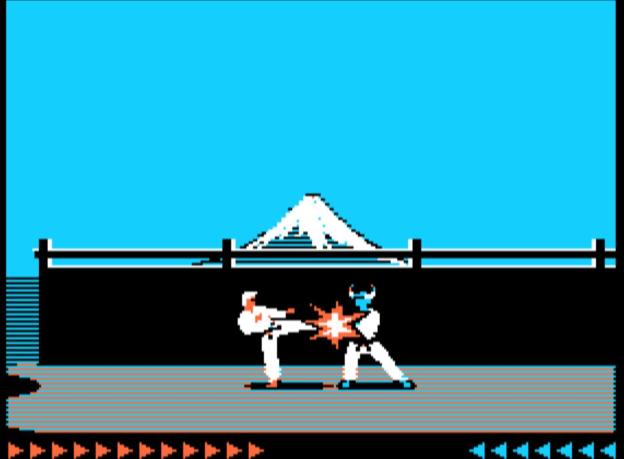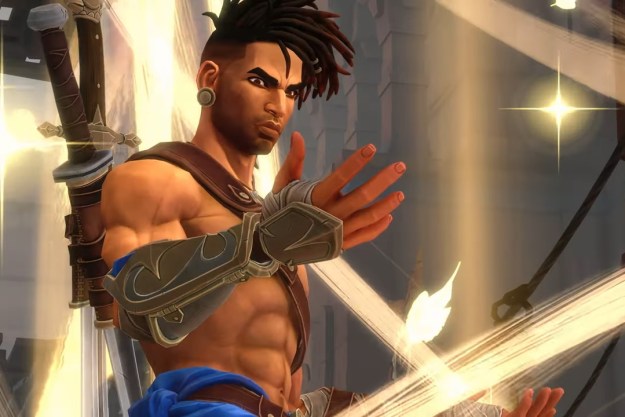 The man behind the Prince of Persia franchise has spent a lot of time recently working on Hollywood projects, including Jerry Bruckheimer’s film adaptation of Prince of Persia: The Sands of Time. But Jordan Mechner is returning to game development and remaking one of his other classic games this year. Karateka, which debuted in 1984 for the Apple II from publisher Broderbund before it expanded to other platforms, will be released as a brand new downloadable game for Xbox 360 and PlayStation 3 later this year. Mechner will serve as the creative director for the new action game, returning to game development for the first time since Ubisoft’s Prince of Persia: The Sands of Time. The videogame veteran talks about Karateka and what he’s applying to this project from his recent Hollywood endeavors in this exclusive interview.
The man behind the Prince of Persia franchise has spent a lot of time recently working on Hollywood projects, including Jerry Bruckheimer’s film adaptation of Prince of Persia: The Sands of Time. But Jordan Mechner is returning to game development and remaking one of his other classic games this year. Karateka, which debuted in 1984 for the Apple II from publisher Broderbund before it expanded to other platforms, will be released as a brand new downloadable game for Xbox 360 and PlayStation 3 later this year. Mechner will serve as the creative director for the new action game, returning to game development for the first time since Ubisoft’s Prince of Persia: The Sands of Time. The videogame veteran talks about Karateka and what he’s applying to this project from his recent Hollywood endeavors in this exclusive interview.

Why did you decide to get back into game development and what’s it like to get hands-on again with this project?
I never meant to be disloyal to gaming; the success of the Prince of Persia franchise took me on an adventure writing for movies, graphic novels, and television that’s happily consumed me for the past eight years. That said, it just felt like the right time to bring Karateka back to life. I’ve been following both the triple-A and indie gaming scenes, itching to get back in, and the rise of downloadable games really struck me as the natural home for Karateka. This is the first time since Prince of Persia: The Sands of Time that I’ve been involved in the day-to-day process of making a game, and it feels great to be back in it.
What role will story play in this game?
Just like the original, Karateka is the story. It’s not a fighting game; it’s a love story with fighting mechanics.
How are you taking advantage of today’s technology in updating this game?
You’ll see monumental leaps in terms of graphics, animation and control–and the music will blow players away. Play it with headphones. We’ve made these significant advancements, but stayed true to the game’s simple, pick-up-and-play philosophy.
Can you talk about your creative process today and how it’s evolved since the original game?
We’re really reimagining the original game, not just remaking it. In the 30 years since I made Karateka basically solo on the Apple II, I’ve worked on every size project there is, and I knew I wanted to do this one with a small team that would be light on its feet, where I could take a very hands-on role. As creative director I’m focused on all aspects of the new game, working with the team on the game play and also the visual storytelling, art, animation, and music.
How big is your team and who are you working with on this game?
It’s a small team with a number of very talented key people. Some of them have done triple-A development before and have come together for this project. I’ve really been enjoying doing a game where I can interact personally with every member of the team every day, on something where it won’t grow as big as the team on a full retail console game (or a Jerry Bruckheimer movie).

You always said Prince of Persia was developed to expand beyond the game world, and you did bring out a film years later. Would this update of Karateka open up transmedia potential?
Every idea has its own strengths and so does every medium. Not every movie, game or graphic novel should become a transmedia franchise. I do think Karateka shares many of the qualities that made Prince of Persia lend itself well to film and graphic novels — it’s a classic, romantic story set in a rich and exotic universe of medieval Japan — but when I thought about bringing Karateka back, I felt first—and very clearly—that it wanted to be a game.
Having worked in Hollywood, were there any influences that have impacted the development of this new Karateka?
Absolutely, the experience of the past eight years, writing screenplays and getting to learn from such fantastic talents in all the stages of making a movie, from script development to post-production, has changed the way I work, informs my creative decisions and methods of collaboration in everything I do. That said, a game is a game, not a movie. Working in movies has given me a renewed appreciation for certain aspects of game development, and especially the special pleasures of working with a small team. Working with a huge budget and cast of thousands on the set of Prince of Persia was liberating in certain ways and limiting in others. Karateka is the opposite. At the end, it’s still about telling a story and creating a world.
What has digital distribution like Xbox Live and PSN opened up for game developers today?
When I got started gaming on the Apple II, games were sold on floppy disks in Ziploc bags. Fast-forward 30 years, and you have not only XBLA and PSN, but mobile, Internet and social gaming as well. Most of the planet now plays games, and this has liberated developers – particularly indie devs. It’s truly an exciting time.
Editors' Recommendations
- Prince of Persia is getting a Dead Cells-style roguelike next month
- The best Prince of Persia games, ranked
- Prince of Persia: The Lost Crown’s ending, explained
- The best amulets in Prince of Persia: The Lost Crown
- All Azure Ingot locations in Prince of Persia: The Lost Crown


